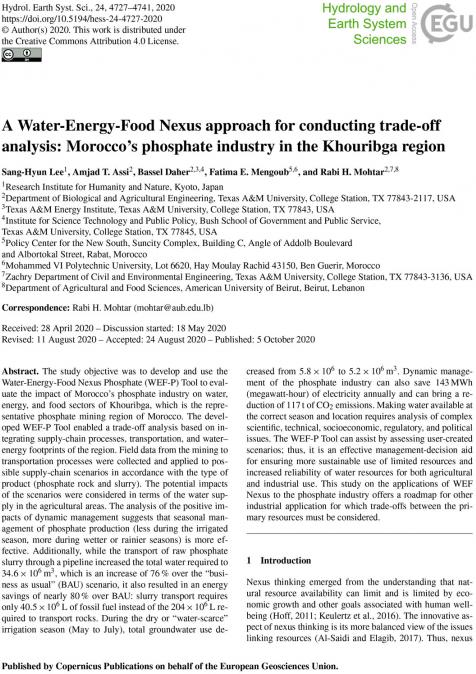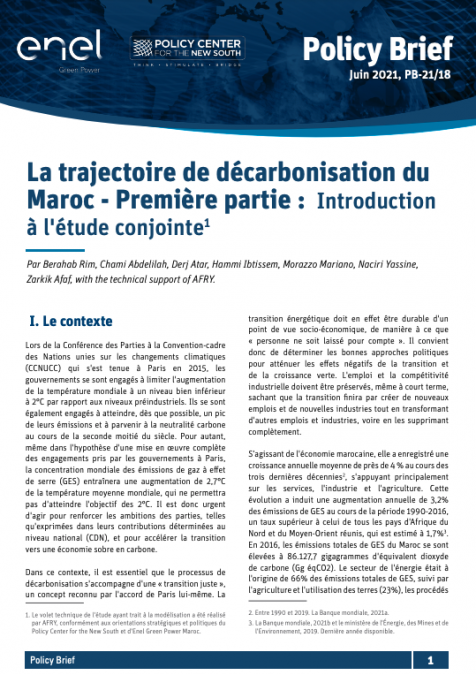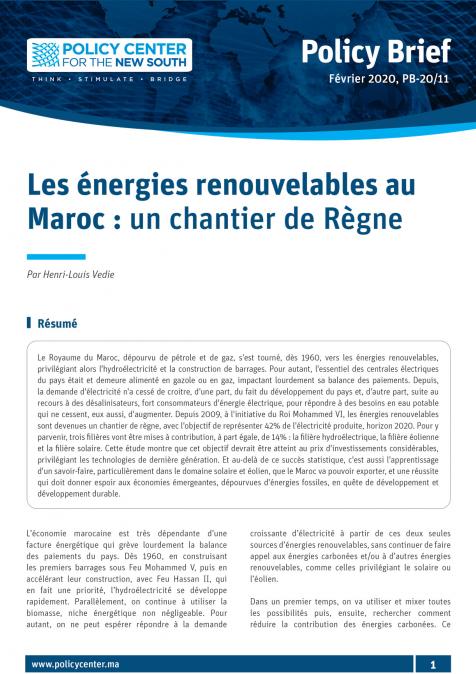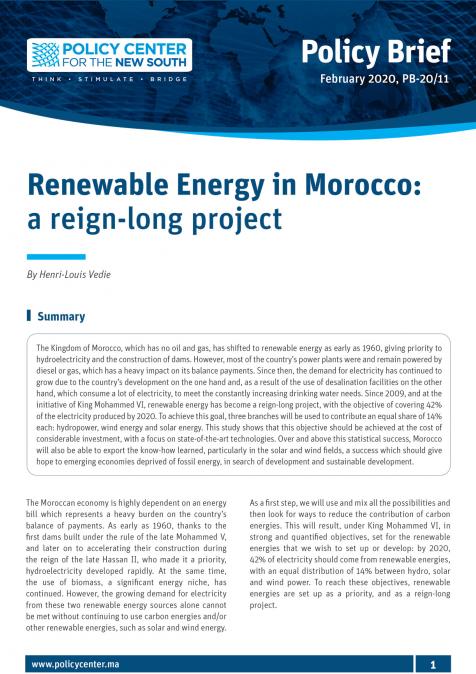Publications /
Paper in Academic Journals
Our Senior Fellow Rabi Mohtar has co-authored with our economist, Fatima Ezzahra Mengoub along other researchers a research paper entitled « A Water-Energy-Food Nexus approach for conducting trade-off analysis:
Morocco’s phosphate industry in the Khouribga region » in Hydrology and Earth System Sciences Journal (Volume 24, Issue 10).
The study objective was to develop and use the Water-Energy-Food Nexus Phosphate (WEF-P) Tool to evaluate the impact of Morocco’s phosphate industry on water, energy, and food sectors of Khouribga, which is the representative phosphate mining region of Morocco. The developed WEF-P Tool enabled a trade-off analysis based on integrating supply-chain processes, transportation, and water– energy footprints of the region. Field data from the mining to transportation processes were collected and applied to possible supply-chain scenarios in accordance with the type of product (phosphate rock and slurry). The potential impacts of the scenarios were considered in terms of the water supply in the agricultural areas. The analysis of the positive impacts of dynamic management suggests that seasonal management of phosphate production (less during the irrigated season, more during wetter or rainier seasons) is more effective. Additionally, while the transport of raw phosphate slurry through a pipeline increased the total water required to 34.6 × 106 m3 , which is an increase of 76 % over the “business as usual” (BAU) scenario, it also resulted in an energy savings of nearly 80 % over BAU: slurry transport requires only 40.5×106 L of fossil fuel instead of the 204×106 L required to transport rocks. During the dry or “water-scarce” irrigation season (May to July), total groundwater use decreased from 5.8 × 106 to 5.2 × 106 m3 . Dynamic management of the phosphate industry can also save 143 MWh (megawatt-hour) of electricity annually and can bring a reduction of 117 t of CO2 emissions. Making water available at the correct season and location requires analysis of complex scientific, technical, socioeconomic, regulatory, and political issues. The WEF-P Tool can assist by assessing user-created scenarios; thus, it is an effective management-decision aid for ensuring more sustainable use of limited resources and increased reliability of water resources for both agricultural and industrial use. This study on the applications of WEF Nexus to the phosphate industry offers a roadmap for other industrial application for which trade-offs between the primary resources must be considered.










